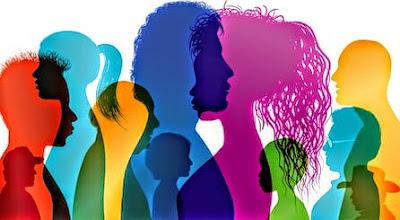Good Morning Friend,
Culture History World - Art is not a culture history world but an important indicator about the culture history world of people.
Culture History World- Is there are things known as Indian culture ? The answer depends on the definition that we give to the term Indian culture .
The meaning of culture history world depends on the context .
When we say that universities should be centres of culture for the country We mean that University should show evidence of a higher level of intellectual development in Art Science etc, then the society that surround it.
In the same sense we can consider am and cultured when he is above the average men around him in intellectual development and refinement of taste.
The element of comparison in the above uses is absent or should be absent when we talk of any group or National culture .
Link here -
Social Development - Skills, Issues And Theory.
Culture History World Process
African culture for the Muslim culture in India simply means the state of development with emphasis on the mind of the people in Africa or of the Muslim in India respectively .
This development is seem in the systems of values and goals of the people in the Institution and codes which they have designed to realise these values and goals, in the material objects used by them, and in the the their manners and manners of Life.
Similarly , civilization is different from culture sins it is mainly concerned with the state of material life and development of Technology .
In which sense, civilization is a part of culture or rather one another indicator of culture .
Different culture may be compared in specific aspect .
However, it is undesirable to claim Superiority to one's culture or to assign inferiority to another.
Whenever we talk of Civilization we always mean high standard of material life and sense of superiority on the superiority of the material and Technology used one is automatically implied .
But the same cannot be said of culture.
Every Nation one community one hour sect has its culture .
To claim one culture or to disparage another is unbecoming of anyone who believes in the essential equality of mankind .
Again the the Ambit of a culture maybe as vague as we would like to make it .
You main talk about your family culture .
Normally , every section or community , identified on religious , sectarian , or class criteria , claims to have a culture of its own .
Link here -
Casteism And Caste - Conflicts In India The Ugly Truth.
Culture History World National Geographic
Every geographical reason or Nation certainly had its distinctive culture .
We may even talked of Asian culture, European culture, African culture .
To world citizen universally human culture may already be in the the offing.
By Indian culture we mean the essential mental Ultra good and characteristic peculiarities which are generally shared by all Indians irrespective of their religious Linguistic and regional distinction.
These mental trait and peculiarities need not be found in every Indian and there may be differences in the intensity of any trait between one Indian and another .
Undoubtedly Jade culture is a statistical concept and should be understood only in that light .
Cultured in it's broadest sense include mental traits, manner of Living Jade external objects associated with life , and institution in addition to goal and values and their symbols.
So in section 3 and 4 we discuss some aspect of temperament Bade mental qualities and values and Lifestyle , etc , that are characteristics of Indian .
Before we proceed further two qualifications may be useful.
When we say that tolerance or religiousness is the characteristics aspect of Indian culture Jade we do not mean that now where else in the world you find the virtues.
In fact , many of the effect of Indian culture form part of Universal human values .
So it will be parochial and unrealistic to claim any exclusive possession of the aspect of culture .
Secondly , certain aspect of culture are mentioned here because historically they have been held to be a part of the culture of the entire Indian subcontinent .
Traditionally , section of Indian have assumed for themselves the role of representatives of India and element of their culture have been conventionally projected as applicable to the whole of India .
So such elements have been accommodate with appropriate comments .
Finally , it is good to remember that Indian culture is complex and composite.
This has been acknowledged by no less a person than Jawaharlal Nehru when he says , If look at India I find the annual growth of composite culture of Indian people .
This perspective is necessary so that the history and culture of our culture may be properly understood.
There are two theories on the evolution of culture .
According to one , the physical environment of human being in a society shapes their culture .
The Other theory say that the idea and Idol in the minds of men are the real foundation of culture and gradually main try to modify their environment according to their Idea and ambitions.
Probably , both physical environment and human thoughts contributed , through continuous interaction led to the emergence of any culture .
Whatever may be the origin of culture, we consider the history of culture only after it has reached reasonably advanced states development app development .
Thus , for the first time did we notice The fountain head of the Indian culture in the Indus Valley Culture that prevailed between 3000 B. C. and 2000 B. C.
The people of the Indus Valley Culture had reached a very high state of Civilization .
After the sudden disappearance of the Indus Valley Civilization and the focus shifted to the extreme south where the Dravidian culture with its advanced social system , industries and trade furnished about 2000 B. C.
Their academic( Sangams) with Amy and literary men , spread over a long period, produces some of the finest pieces of ancient Tamil literature.
Unfortunately historical records where new kept.
However did the Dravidian culture has come down to us in an unbroken chain of succession and of course with the modification and adaptations introduced through centuries .
The next major stream of culture fluid into Indian from Central Asia .
The barrier of this culture where the the Aryans who came to India from fore of but settled , in course of time Z throughout Northern India , some of them even migrating further to the south .
Their original Rig Vedic culture underwent some changes in the encounter with the original inhabitants of the land but, by and large their culture became the foundation of the Hindu culture that provided throughout Northern India and exercise its influence for and wide, including southern India , near east countries Sri Lanka etc .
In course of time, this culture was identified with the whole of India and to foreigner, the vedic Hindu culture represented the accident Indian culture in its entirely.
The basic of this culture where the four Vedas, there commentaries, the brahmins and the Upanishad .
The main Legend of this culture are contained in the two epics, Ramayana And Mahabharata and the Purana.
A Sanskrit, the original language of the Aryans begin to spread throughout India in the Limited circle only after it be came a dead language .
Link here -
Inequality - Poverty Guideline Problem Of The Nation.
Culture History World Examples
The Buddhist religion that florist in India between the 6 century B. C. Andy 6 century A. D. contributed the next major stream to Indian culture.
The Buddhist culture was an of shoot of the later Vedic culture but with certain basic differences .
That is why Buddhism became per different religion not another set of Hinduism .
Jainism which also Rose about the same period developed more or less like a set of Hinduism Buddhism introduced basic changing in the thoughts moral and mode of living of the people in many parts of the countries .
It was mainly through Buddhist and Jain missionary's that Hindus culture and Sanskrit where carried to the different parts of South India between the 3rd Century B. C. and the first century A. D.
A Remarkable and major culture 26 took place in India between the 6th and 10th century A. D.
There was an encounter between three distant culture which had maintained their identity very clearly till then .
They were the purani Hindu culture, the Buddhist culture and the Dravidian culture .
It is worth nothing that these three culture had received substantial state patronage for sufficiently long period before this fusions .
The distinct durable element of the Buddhist culture, especially ahimsa styles of painting and sculpture vegetarian etc were by the Hindu culture.
The Buddhist culture will not with stand the assault of the caste system and the popular attraction multiplicity of gods .
A Source will it lost its identity in the absence of state pattern age .
The Dravidian culture assimilated some of the major elements of the Puranic Hindu culture while retaining its separate identity.
The Puranas religious tenant and Gods of Hindus culture slightly modified to accommodate the Dravidian legend, religious principles, and gods .
Does culture almost sketch out of this encounter what did Dravidian culture was substantially affected assimilating parts of the Aryans culture and maintaining the major aspect of its origin culture.
Sanskrit was accepted along with the original language as one of the court language of scholar in South India .
It was a result of this fusion that the Bhakati cult rose in the south and prayed to the north.
Contact with Islam after the the tenth century and the Muslim rule in India for nearby sixth century did change the basic culture of India but the changes where more in the nature of mutual understanding and Accommodation than in the fundamentals .
But by this time the Indian culture, Nanak, Kabir and Ramanand communal harmony to the masses Sikkim was born out of the efforts to bring together Hindus and Muslims .
Two important culture consequences of the Muslim rule in India are worth nothing .
Persian and Arabic words where absorbed in the administrative language change you very much.
Till then Hindu with various data and belonging to different state had been the only religious community of India is perfect for small pockets accommodating Jain, Parsis, Jews and Christians .
Low minority communities appeared on a large-scale everywhere .
In certain religion Muslims and six became the major it is communities .
The need for communal harmony became compulsive .
In addition we may mention that Hindustani culture common to Hindus and Muslim prevailed in the royal court and among the upper classes .
Link here -
Indian Economy - To Improve Time, Money Problem.
Culture History World Emotions
The impact of the English culture in India was marginal during the first part of the British rule in India .
Only when the English culture took in the element of modernization Indian where affected by the English culture .
The reaction of Indians to the modern European culture watch two - fold .
Some Indians decided to receive their ancient culture in a bid to stand against the modern European culture .
Some other wanted to assimilate the good features of the modern culture brought from Europe .
The compulsions of the time saw that the latter succeeded while the former are still fighting a losing battle .
When an irrational glorification of the past did not appeal to many Indians who wanted India to prosper in the modern world .
They will come the good features of modern culture while maintaining firmly rooted in the traditional India culture .
In the above brief history of Indian Culture we have certainly ignore the valuable contribution made by foreign culture from time to time and have confine our attention to the majors cultures of India .
This does not mean that the rest of India did not have their own culture or had little to contribute to the common culture of India .
Conclusion -
The culture history of India should draw our attention to the fact that Indian culture is composite and should win our admiration for the wonderful power of assimilation and fusion that its has displayed throughout history .
culture history world synthetic has been a continuous process in India.














